Barcelona's Sagrada Familia basilica, Antoni Gaudi's masterpiece, is one of the world's most recognizable structures. But like so many others—the Eiffel Tower comes to mind—we know its general form much better than we know its details.
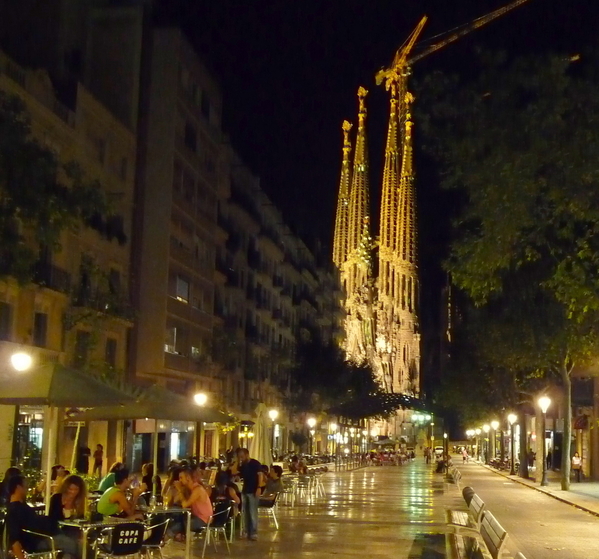
That's especially true for Sagrada Familia, some of whose must unusual features are high above street level, and sometimes obscured by construction equipment and wrapping. The building, begun in 1883, is far from finished, with vague hopes that it will be finished by 2026, the centenary of the architect's death.
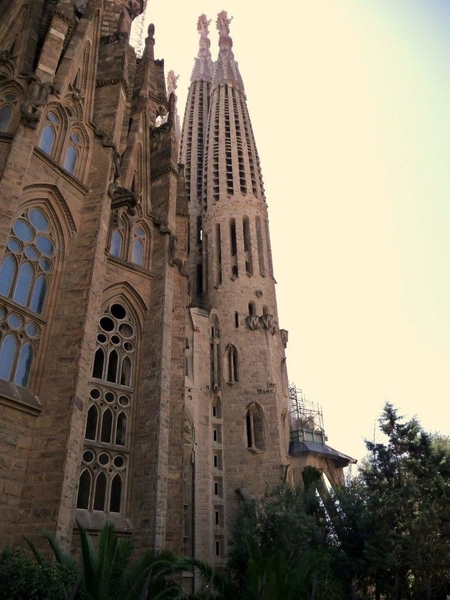
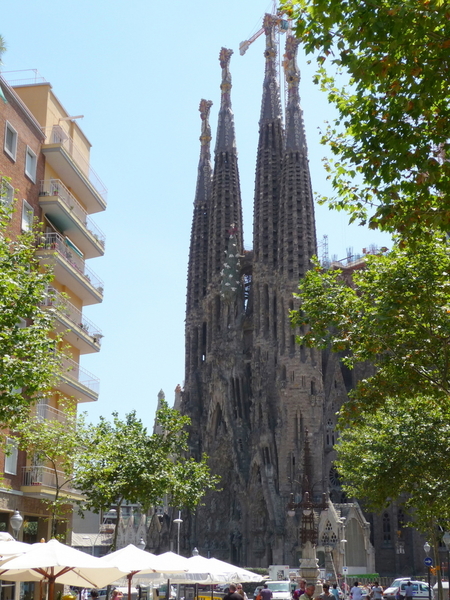 I've spent time looking at it on two visits to Barcelona, in part because I've had trouble deciding if I love it or hate it. I also visited the incomplete interior once, before the first service was held there in 2010 by Pope Benedict XVI. Only since 2017 have there been regular services there, and construction continues inside. But that's for a different blog.
I've spent time looking at it on two visits to Barcelona, in part because I've had trouble deciding if I love it or hate it. I also visited the incomplete interior once, before the first service was held there in 2010 by Pope Benedict XVI. Only since 2017 have there been regular services there, and construction continues inside. But that's for a different blog.
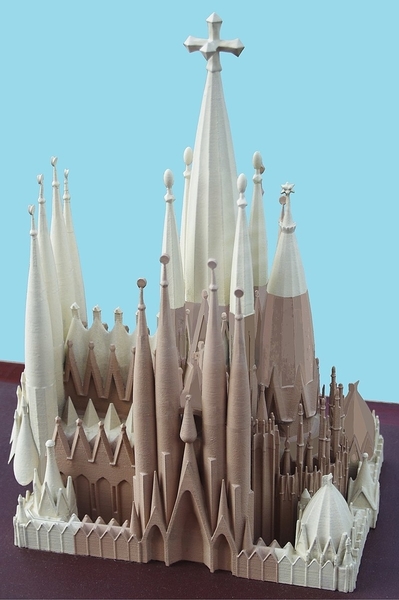 Just how incomplete the building is can be seen in this schematic that shows the completed parts in brown and the future plans in white.
Just how incomplete the building is can be seen in this schematic that shows the completed parts in brown and the future plans in white.
There are two facades, named for the Nativity and Passion of Jesus; construction on the third and largest, named Glory, at the left in this picture, only began in 2002.
Of the eighteen spires visible in the model, only four at each of the two facades have been built yet. The tallest, at the center, will make Sagrada Familia the tallest church building in the world.
As with everything Gaudi planned, whether wearing his engineering hat or his mystical one, there's a reason for the numbers. One for each of the Twelve Apostles, one for each of the Four Evangelists, one for the Virgin Mary, and one—the tallest—for Jesus.
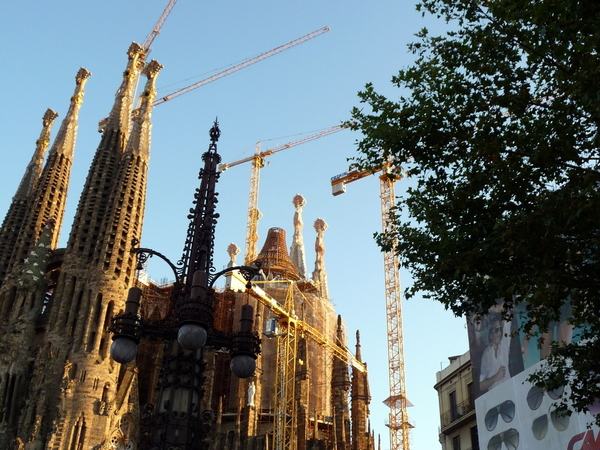
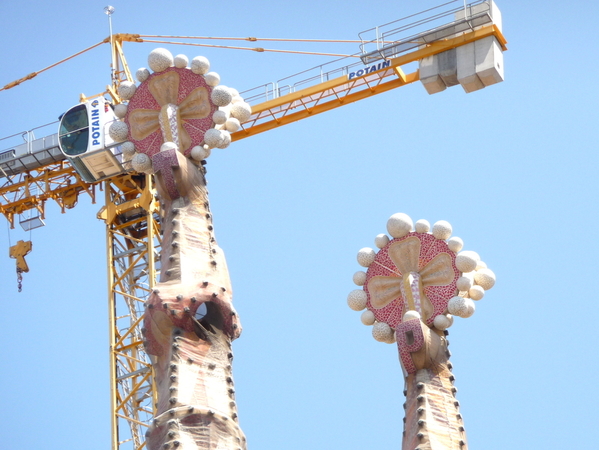
Many views in recent years give the impression that there are more spires, but that's only because at times so many cranes are at work on the project.
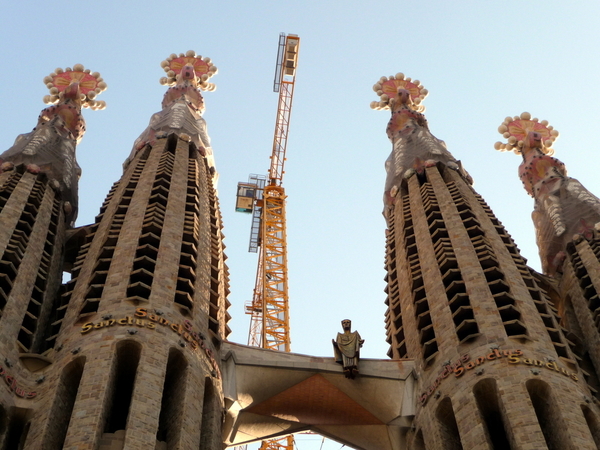 The lower portion of each spire, as seen above, has many openings. That's for another Gaudi innovation; instead of a bell tower with traditional cast bells, he designed tubular bells to hang, one in each spire, and chime with the winds, like a giant set of wind chimes. He calculated (engineering hat) dimensions and weight for each to create the right tones, and for the sound to carry down the spires into the church.,
The lower portion of each spire, as seen above, has many openings. That's for another Gaudi innovation; instead of a bell tower with traditional cast bells, he designed tubular bells to hang, one in each spire, and chime with the winds, like a giant set of wind chimes. He calculated (engineering hat) dimensions and weight for each to create the right tones, and for the sound to carry down the spires into the church.,
They've been compared to flowers, to sparklers, to pinwheels...it's hard to say. But it's certainly true, as critic Paul Gold-berger wrote, that the church is "the most extraordinary personal inter-pretation of Gothic architecture since the Middle Ages."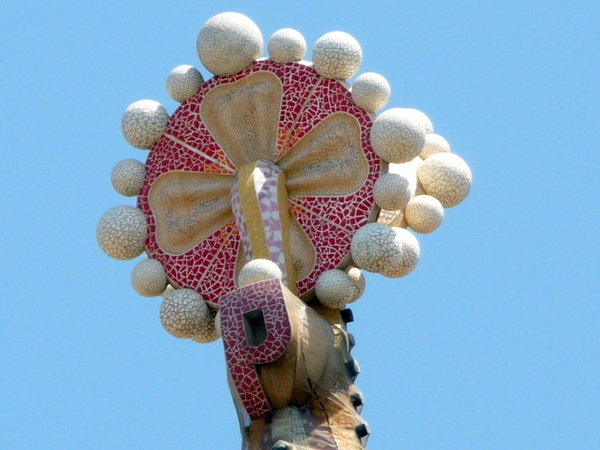
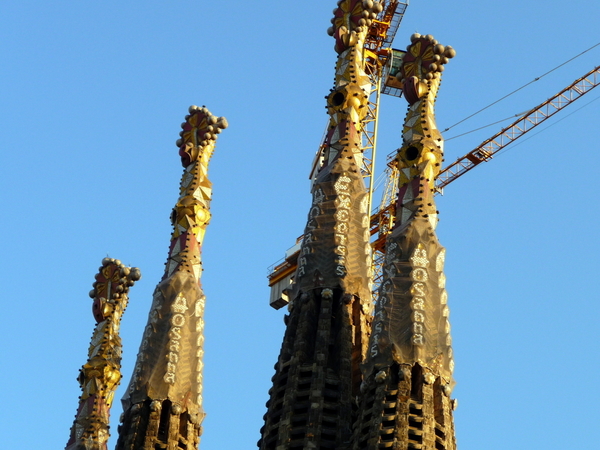
"Personal" very much. Gaudi was not a team player as an architect, and some-times only grudgingly shared his plans with those responsible for the construc-tion work. When he died in 1926 after being struck by a tram, only the Nativity facade, intended to celebrate the joyous birth of Jesus had been built, and much of the remaining plan existed only in models and sketches.
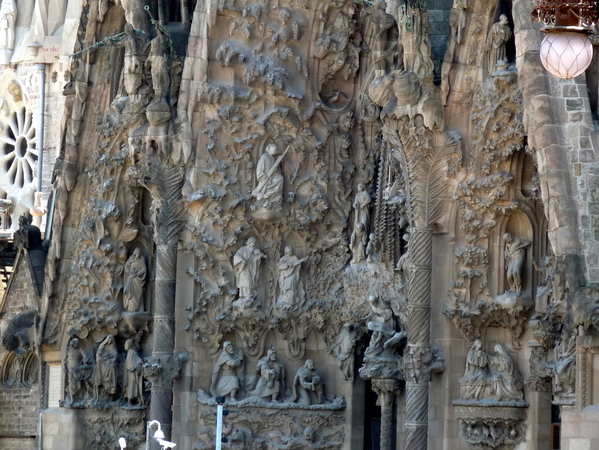
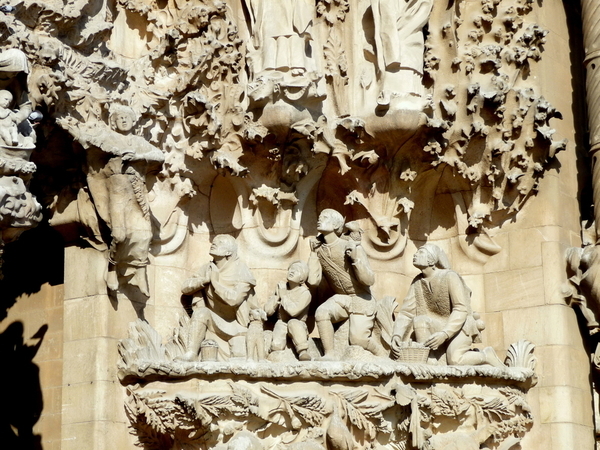 As a result, there has been continuing controversy over the building of the remaining portions, disputes over what is, or should be, true to the original Gaudi vision. Thus, the Nativity facade, with its incredibly dense sculptures, is the part most clearly matching his wishes.
As a result, there has been continuing controversy over the building of the remaining portions, disputes over what is, or should be, true to the original Gaudi vision. Thus, the Nativity facade, with its incredibly dense sculptures, is the part most clearly matching his wishes.
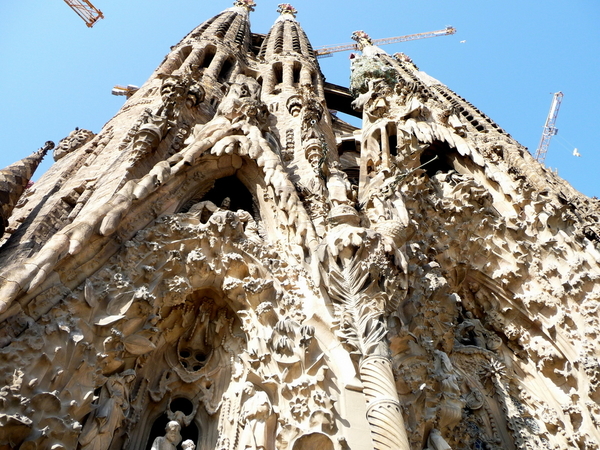
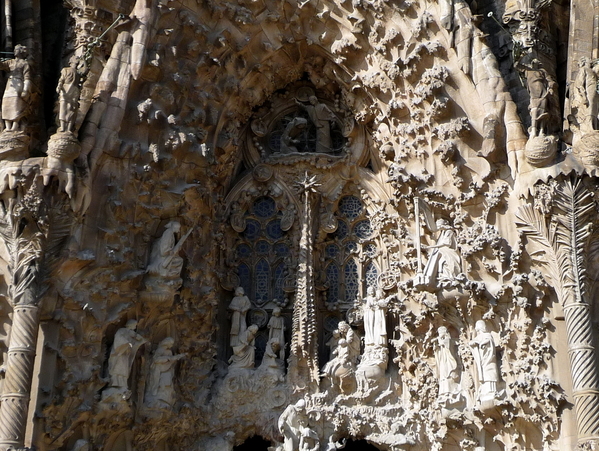
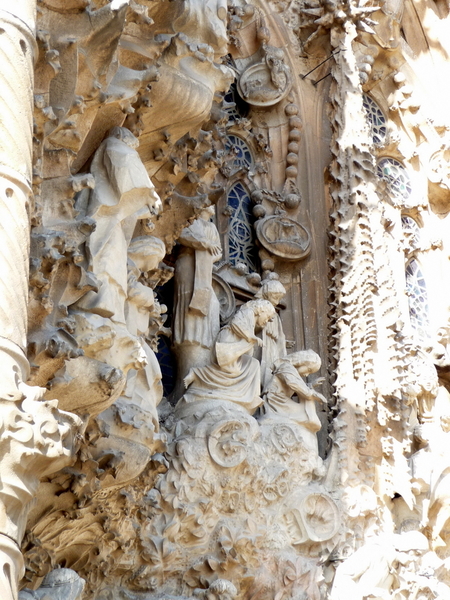
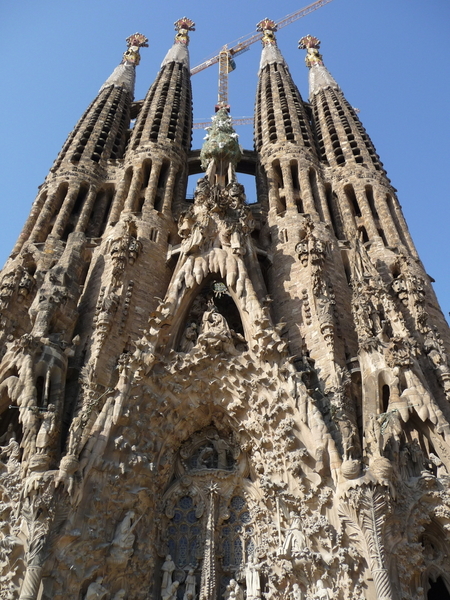

On the opposite side, construction on the Passion facade, representing Jesus' last days and crucifixion, takes on a completely different appearance, which many people, including me, mistake for someone else ignoring Gaudi's style and intention.
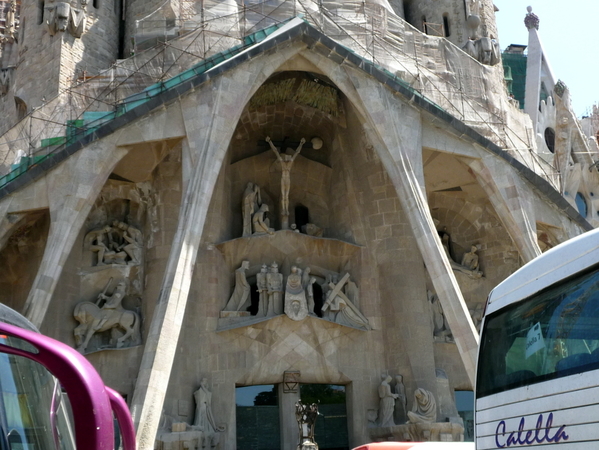
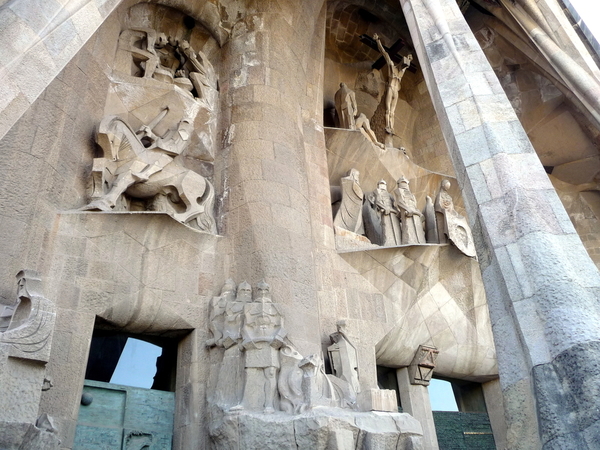
But while Gaudi left many details unfinished and some documents were destroyed during Spain's Civil War, the plan is his; the bare and harsh images were intended to reflect the harshness of the last days of Jesus' life. The designs, and the sculptures, based on Gaudi's 1917 plans were carried out by a team of sculptors headed by Josep Maria Subirachs.
George G, PortMoresby and Michael Fong II were able to recognize the somewhat limited view that was posted as this week's One Clue Mystery. Congratulations!
At the lower parts of the spires, Gaudi placed wheat and grapes, representing the source of the bread and wine for communion. Below, parts stacked and ready to become part of the church.
Even the accessory buildings that appear along the outsides of the basilica share a distinction that makes Sagrada Familia even more unique, and possibly puzzling: Gaudi left almost no straight lines, and no right angles anywhere in the building.
Occasionally, you'll hear people say they want to visit this place or that "before it changes." Sagrada Familia has so much change ahead of it, it makes a mockery of the idea. If I could, I might want to go over and over, while it changes. Like a good novel, I can't wait to see how it comes out.

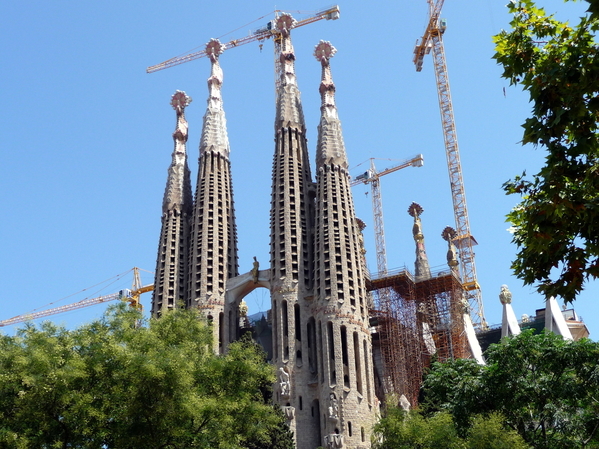
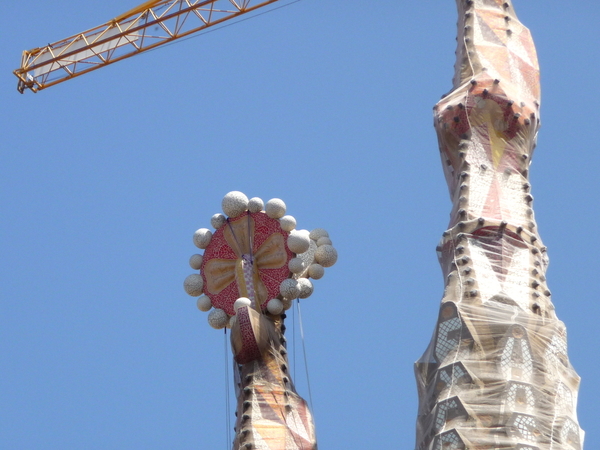
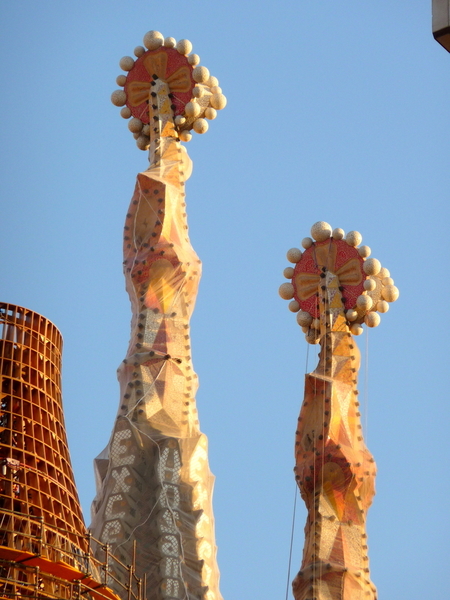
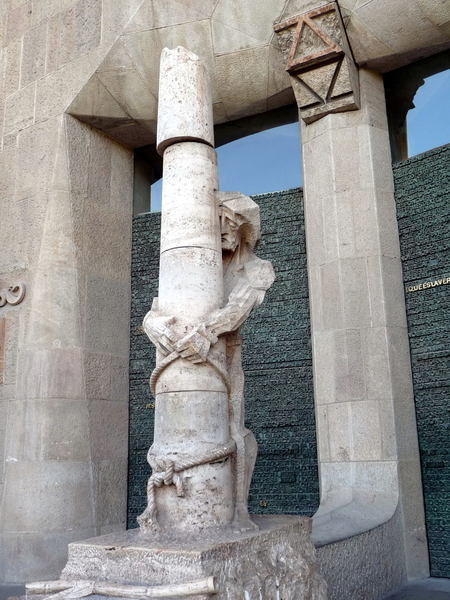
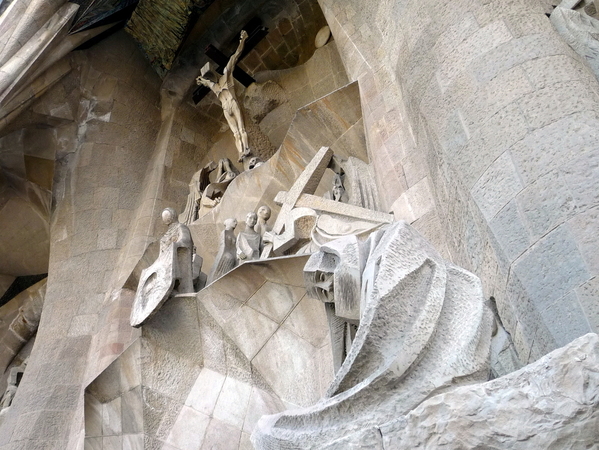
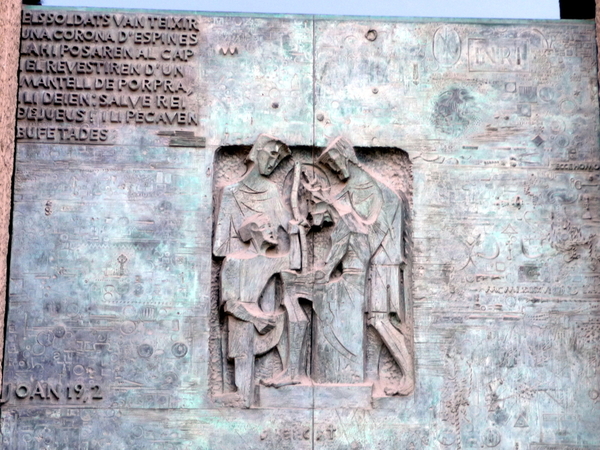
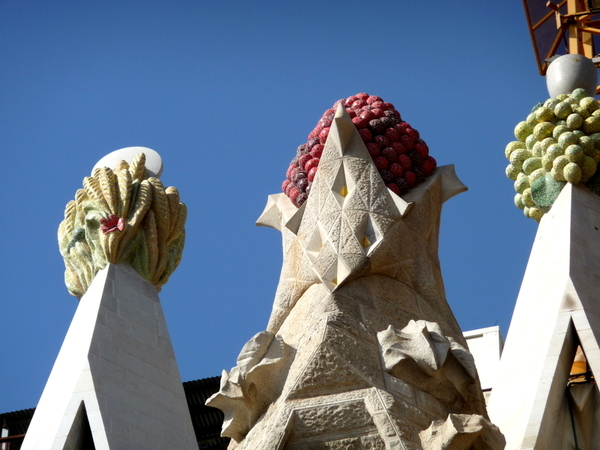
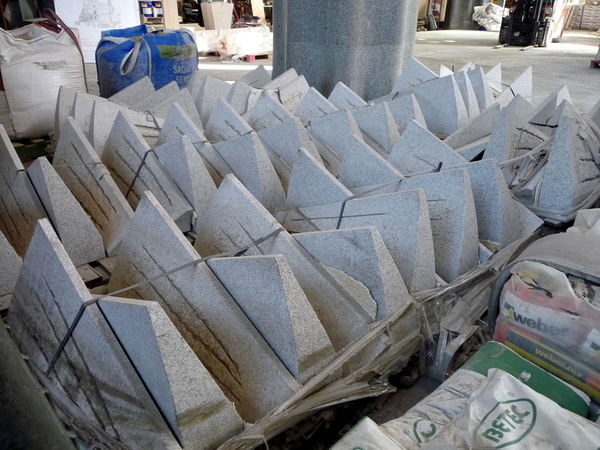
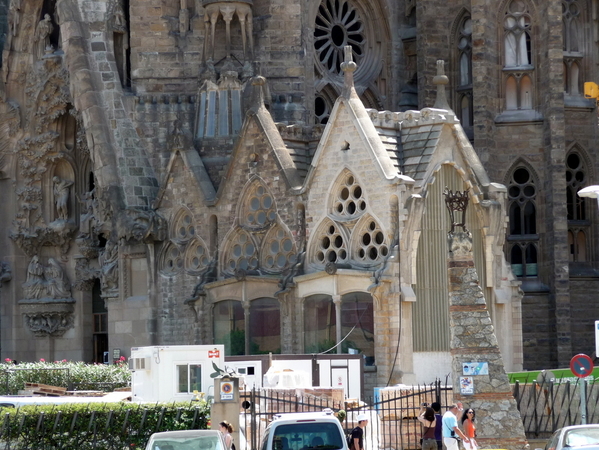
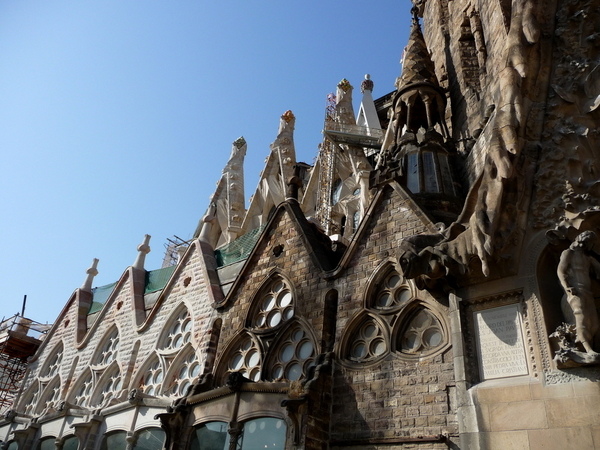
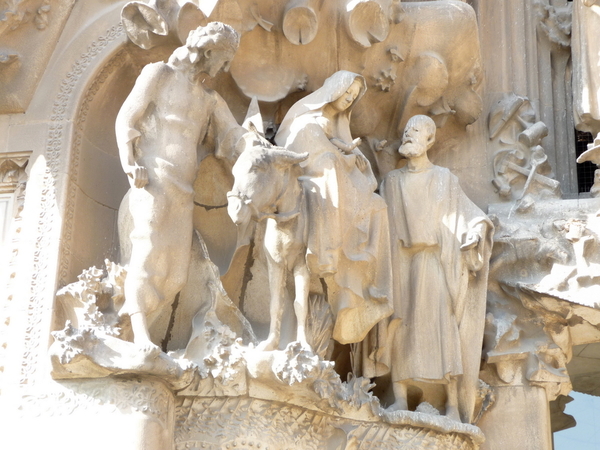
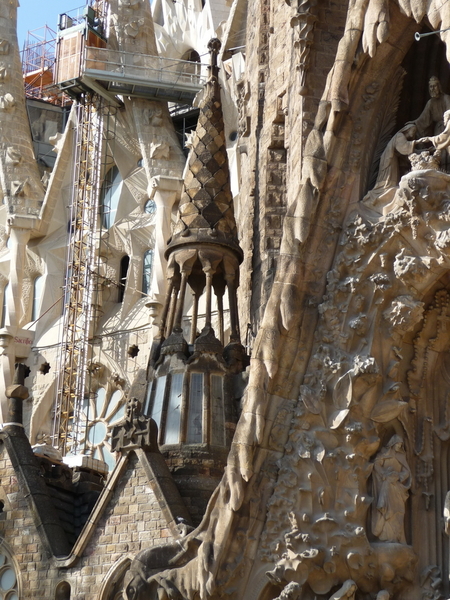
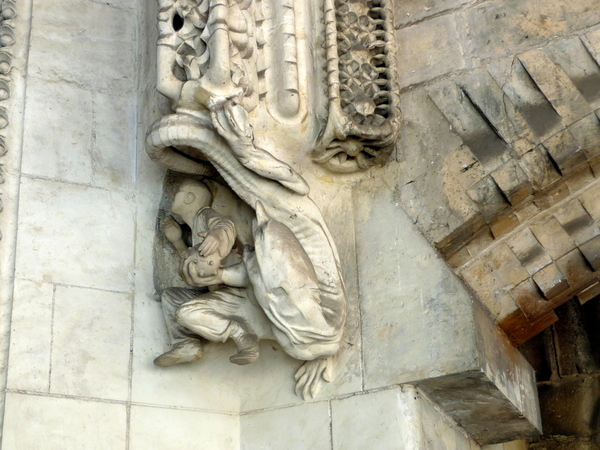




















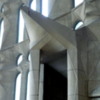










Comments (1)